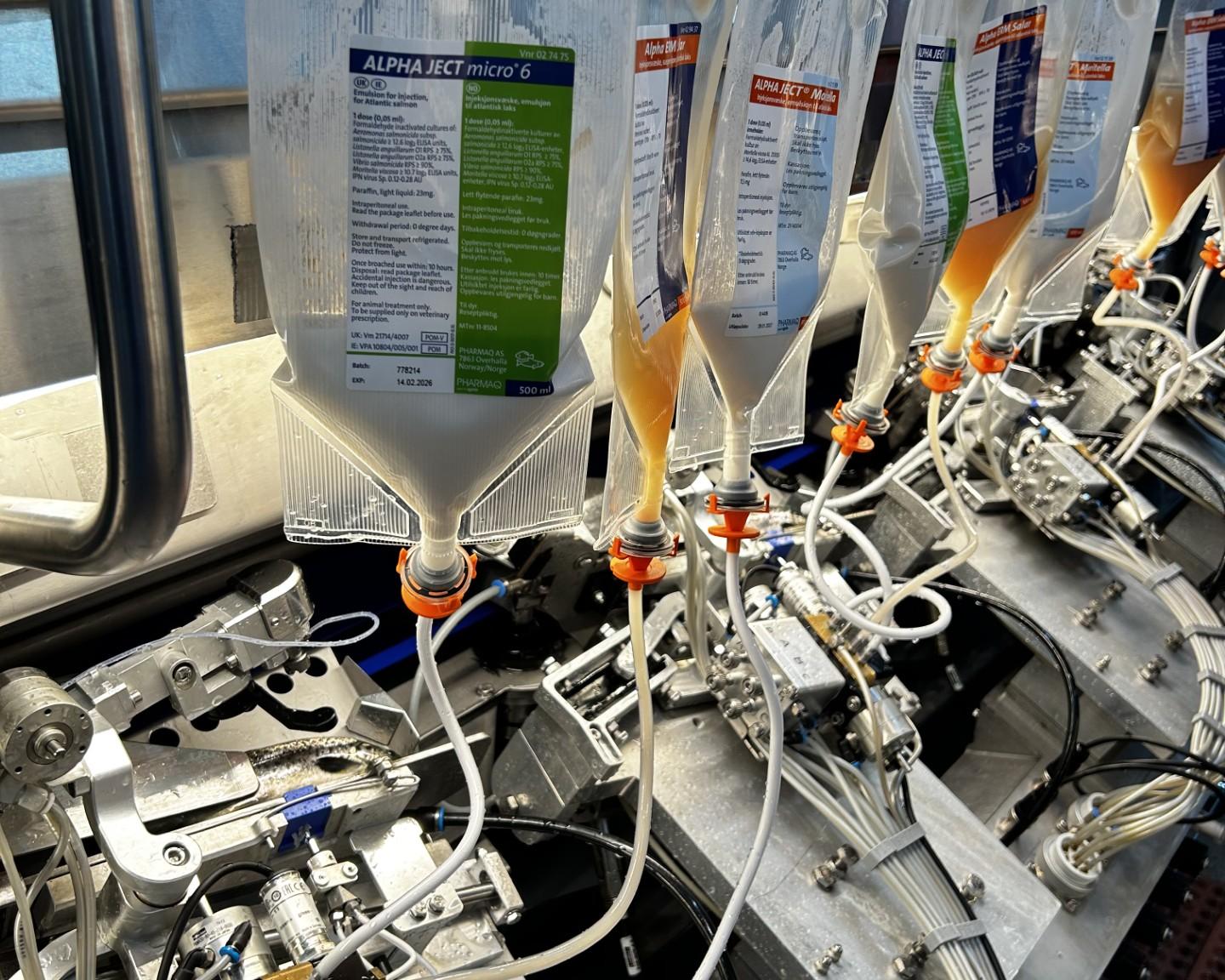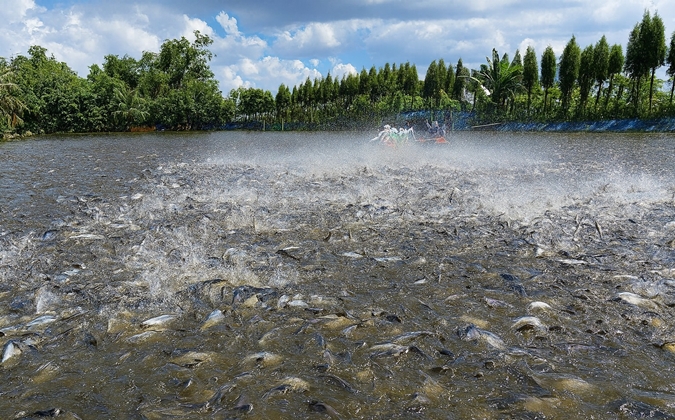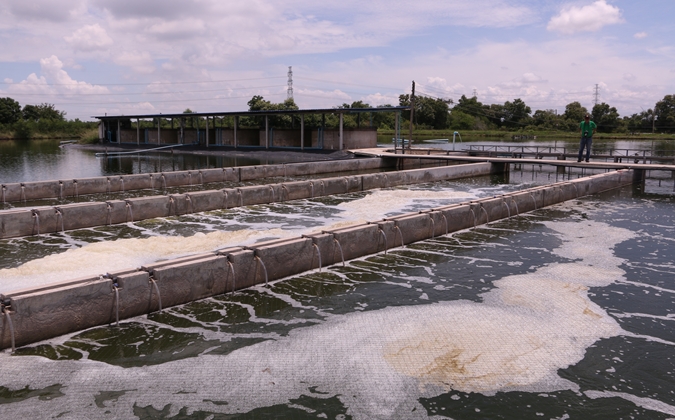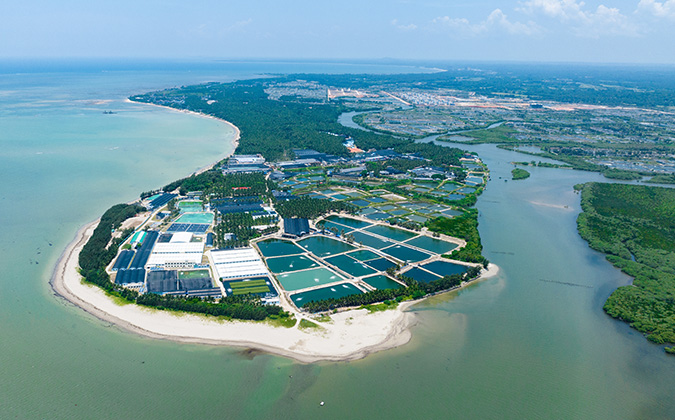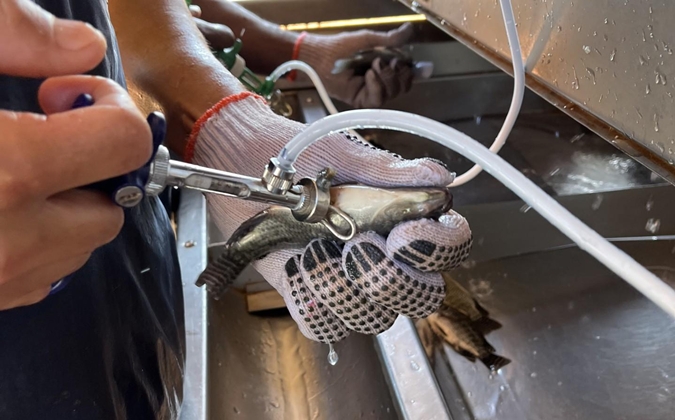
Fish Farm Forum is pleased to host this editorial page on behalf of Pharmaq.
Pharmaq
Why small vaccine doses are now the norm in aquaculture
In the last 20 years, fish vaccine doses have got smaller, and at some pace.
From 0.2ml once being the industry standard to 0.05ml the most seen now, and some 0.025ml products available, there has been a clear direction of travel.
A major breakthrough in vaccination came in the early 1990s as a consequence of moving from water- to oil-based vaccines, which, together with better farming practices, precipitated a decline in the use of antibiotics in the Atlantic salmon industry.1 What prompted the shift was research late in that decade showing that early salmon vaccines could sometimes impair fish growth and reduce carcass quality.2
Small but highly tooled products
While the doses got smaller in response to this evidence, scientists have also found ways to add more vaccine components — up to seven in one shot, so far.
“Optimizing this means more attention to vaccine purity and to administration routines. This requires a lot of heavy R&D work and speciality,” said Nils Steine, business unit director for PHARMAQ. “You need to have a lot of experience to understand this and know what to do to get to these points.”
While the routes to the effective micro-dose vaccines that the industry demands may involve complex work in the lab, the desired end results are always the same: improved yield of antigens, good shelf-life and cost-effectiveness. For the fish, the target is reduced side effects and strong feed conversion.
Part of PHARMAQ’s own journey toward smaller doses included validation through research working alongside breeding company Benchmark Genetics, evaluating thousands of salmon at a seawater site in Norway for 6 months after their seawater release.3 Fish which received a 0.05ml dose of a six-component vaccine had 8% higher weights than those which received a 0.1ml dose — an enticing prospect for the industry.
Administration focus
For great micro-dose performance, special care with administration is a prerequisite, Steine said, noting that the same temperature and viscosity of products is advantageous when carrying out twin injection with micro vaccines. He concedes that “it doesn’t make the vaccination or hatchery teams’ lives easier at all. It makes it more complex. At the same time, we see that vaccination teams all across the industry are tackling this well.”
A consequence of increased licensing requirements is that vaccines against new pathogens may not get to market as fast as producers would like them to. This means that combining licensed vaccines such as those offered by PHARMAQ with autogenous components is part of many companies’ disease prevention strategies.
“Combining more vaccines from several suppliers is what we are seeing going forward. We have to be able to adapt to that, and we must also make sure that we are doing the best we can supporting the farmers in this work, bridging this period while trying to hurry as much as we can in bringing new products to market,” Steine said.
In the dominant global salmon markets of Norway, Chile, UK and Canada, these vaccine combinations have become the norm, and it is also trending in other markets such as South America (tilapia) and the Mediterranean (seabass). This has precipitated greater use of machine-vaccination technologies, as well as considerable investments in large, advanced hatchery facilities.
The future of micro-dose vaccines
Even though the evidence for smaller-dose vaccines is very robust and they are proven to have the proper margins, Steine believes it’s unlikely that vaccine volumes will get even smaller soon, though there might be more vaccines in the 0.025ml dose concept. If there were to be any smaller dose, totally different administration approaches might be needed.
“When documenting any vaccine, including reduced-dose volumes, the same stringent requirements apply, and after many years of applying this in many markets, we are very confident with the concepts,” he said. “When we see the evolution and adaption of more-precise delivery systems in manual vaccination guns, as well as semi- and fully-automated machines, our confidence only gets stronger.”
Steine acknowledges that there will always be some questions and scepticism with new technologies and applications.
“This is healthy, and we need to make sure that we can respond effectively and precisely, with experience, data and science,” he said. “The aquaculture industry is also evolving fast with regard to production technology and systems. We strive to be forward leaning in this context and support new ways of applying and combining vaccines. In PHARMAQ, we do this inside our existing R&D licenses, with fish farming companies as well as with internal and external project partners.”
Despite requiring a greater focus on vaccine application and challenging R&D in designing products, there’s no doubt micro-doses are here to stay, Steine stressed — and for good reason.
“We’re talking about a reduced burden on fish, the ability to vaccinate at an earlier stage in the animal’s life, greater flexibility in co-injection regimens and a refined and technologically advanced vaccine product,” he noted. “There’s a lot to like — but we always need to keep up with what the trends are on the ground so that we can help fish farmers achieve the best results in terms of performance and fish welfare.”
1 NORM/NORM-VET. 2022. Usage of antimicrobial agents and occurrence of antimicrobial resistance in Norway. Tromsø / Oslo: NORM/NORM-VET; 2023. Report No.: ISSN 1502-2307 (print), 1890-9965 (electronic).
2 Midtlyng PJ. Protection versus side-effects. Dev Biol Stand. 1997;90:371-9.
3 Drangsholt TMK, Gjerde B, Ødegård J, Fridell F, Bentsen HB. Quantitative genetics of vaccine-induced side effects in farmed Atlantic salmon (Salmo salar). Aquaculture. 2011;318(3-4):316-24.
Posted on: September 02, 2025


